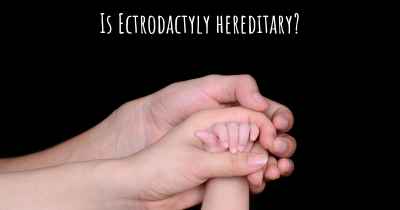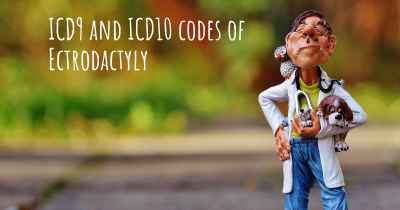How is Ectrodactyly diagnosed?
See how Ectrodactyly is diagnosed. Which specialists are essential to meet, what tests are needed and other useful information for the diagnosis of Ectrodactyly

Ectrodactyly, also known as split hand/split foot malformation, is a rare genetic disorder characterized by the abnormal development of the hands and/or feet. It is typically present at birth and can vary in severity from mild to severe. Diagnosing ectrodactyly involves a combination of clinical evaluation, medical history assessment, and diagnostic tests.
Clinical Evaluation
The first step in diagnosing ectrodactyly is a thorough clinical evaluation by a healthcare professional, such as a pediatrician or geneticist. They will examine the affected individual's hands and feet, looking for specific physical characteristics that are indicative of ectrodactyly. These characteristics may include:
- Missing digits: Ectrodactyly often results in the absence of one or more fingers or toes. The missing digits may be completely absent or only partially formed.
- Cleft hand/foot: In severe cases, the hand or foot may be split into two or more parts, resembling a cleft.
- Malformed digits: The fingers or toes that are present may be unusually shaped or fused together.
- Underdeveloped nails: Ectrodactyly can also affect the growth and development of nails, leading to small or absent nails.
Medical History Assessment
Obtaining a detailed medical history is crucial in the diagnostic process. The healthcare professional will ask questions about the individual's family history, looking for any instances of ectrodactyly or other related genetic conditions. They will also inquire about any other symptoms or developmental delays that may be associated with ectrodactyly.
Diagnostic Tests
While the clinical evaluation and medical history assessment provide valuable information, additional diagnostic tests may be necessary to confirm the diagnosis of ectrodactyly. These tests can include:
- X-rays: X-ray imaging can reveal the internal structure of the affected hands and feet, helping to identify any abnormalities in the bones or joints.
- Genetic testing: Ectrodactyly is often caused by genetic mutations. Genetic testing can identify specific gene mutations associated with ectrodactyly, providing a definitive diagnosis. This may involve analyzing a blood sample or other genetic material.
- Ultrasound: In some cases, ultrasound imaging may be used during pregnancy to detect ectrodactyly in the developing fetus.
Genetic Counseling
Once a diagnosis of ectrodactyly is confirmed, genetic counseling is highly recommended. Genetic counselors are healthcare professionals specialized in genetics who can provide information and support to individuals and families affected by genetic conditions. They can explain the inheritance patterns of ectrodactyly, discuss the risk of recurrence in future pregnancies, and provide guidance on available treatment options and supportive care.
In conclusion, diagnosing ectrodactyly involves a combination of clinical evaluation, medical history assessment, and diagnostic tests. The physical characteristics of missing or malformed digits, cleft hand/foot, and underdeveloped nails are key indicators during the clinical evaluation. Obtaining a detailed medical history, including family history, is important to assess the genetic component. Diagnostic tests such as X-rays, genetic testing, and ultrasound may be performed to confirm the diagnosis. Genetic counseling is crucial to provide support and guidance to affected individuals and families.








